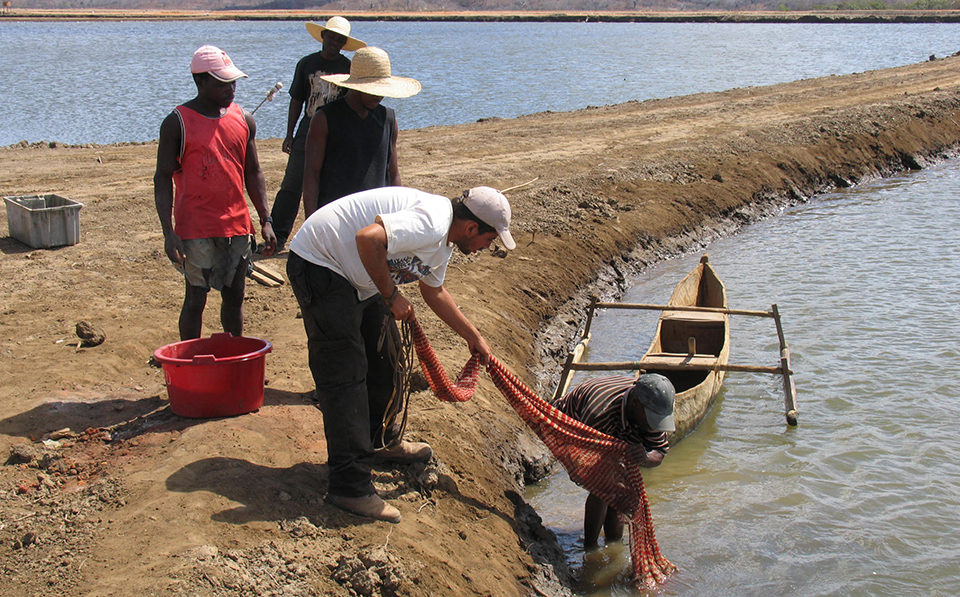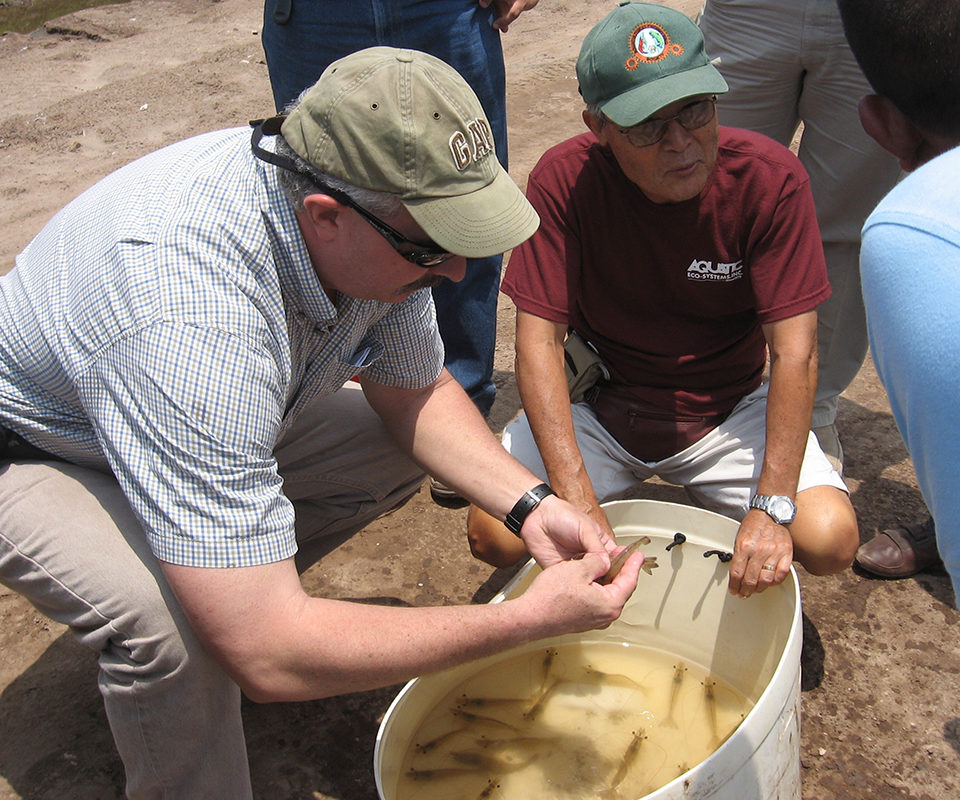Ability to prevent disease outbreak from causing substantial losses entails determining elements of predictability

Health screening is an essential component of any animal husbandry program. As in all agricultural activities, disease is a ubiquitous feature of aquaculture, so disease intervention and prevention are important to ensure continued profitability.
The main challenge to aquaculturists lies not in determining that diseases are present, but in identifying what disease problems can result in economically significant losses and how to minimize their impacts.
The ability to prevent a disease outbreak from causing substantial losses entails determining what elements of predictability are present. This is usually only attainable by sampling animals at intervals. Sample size, frequency and methods to cost-effectively minimize the risks and impacts of disease are concerns for all aquaculturists.
Proactive management
Stress is an inherent component of all animal production processes. While every effort should be made to reduce stress, it is simply not possible to control all of the variables related to farming animals in aquatic environments.
Consistent observation of animals is essential. Behaviors that relate to animal health should be monitored as continually as is realistic. These include feed consumption (sick animals usually do not eat as well as healthy animals), behavior (hanging around pond edges, staying at the top of the water column), the presence of external factors (high degrees of bird predation) and physical changes in animal appearance (lesions, spots, etc.).
When such problems are noted, they should lead to much closer examinations of population health. Proactive management of disease also entails sampling on a regular basis to ensure that the animals are healthy. When these programs show that animals are not healthy, diseases need to be identified and dealt with accordingly.
Truly proactive management of health requires a concerted effort that involves all parties in the animal-rearing process. These include feeders, individuals who take water samples for both chemical and biological parameters, and animal health specialists. Intervention strategies need to be defined, and farms should be prepared to use whatever strategies are required to minimize the financial impacts of disease.

Sampling guidelines
For high-value crops such as fish, it is relatively easy to avoid handling large numbers of animals for examination. Fish in cages, for example, are often visible when they feed and can be observed with cameras. Many managers think terminal sampling is the best approach, but this is not necessarily true.
Simply catching fish in a net and looking for external disease symptoms and behaviors indicative of specific disease processes can be useful. For animals such as shrimp, large numbers of animals can be examined in cast net samples. Those that display pathognomonic symptoms – those whose presence means a particular disease is present – can be selected for terminal observation.
A source of confusion is how many animals to sample. This should be dictated by the goal of the sampling. Typically, one or more of three objectives apply:
- Determination of the prevalence of a specific pathogen in the population. How many animals have a specific problem?
- Determination of the overall health status of the population. This includes nutritional status (as seen in deformed animals or the absence of lipids in the hepatopancreas in shrimp, for example), the presence of symptoms that indicate an environmental issue (gill fouling) or overt signs of infectious disease (white spots due to white spot syndrome).
- Determination of how the health of the population is changing with time. This combines elements of both of the above.
As an example, imagine that a 1-ha pond with 100 shrimp/m2 contains a million animals. Guidelines established by the American Fisheries Society call for a random sampling of 150 animals to have a 98 percent chance of finding a given pathogen in the population. The general threshold of acceptability for determining the potential presence of pathogens is typically 95 percent, which requires 60 animals for the population described.
These percentages are based on taking a truly random sample, which is generally not possible with animals in ponds or cages, and the ability of the testing technology to detect a pathogen at a very high degree of accuracy. In reality there are no such tools; even polymerase chain reaction testing has limitations. Suggested values should thus be taken as guidelines only.
Sampling for population health status in shrimp ponds should consist of composite samples taken at multiple points around the pond. Areas where weaker animals are likely to be found, such as near entrance gates, exit gates, areas of accumulated sludge or feed trays, are all potential spots where samples indicative of what is occurring in the population can be taken.
Keeping in mind that the weakest animals do not necessarily represent what is happening in the population as a whole, increases in the frequency of affected animals between sampling intervals coupled with behavioral observations give the best chance of determining what underlying issues could be problematic.
Sampling schedule
Sampling should never be solely based on a calendar schedule. Taking very small samples also is of little use, as changes in the health status of the population are of most concern. Targeting the weakest animals, which indicates what is affecting some animals, does not give an indication of the changes in the population as a whole that farm management must use to judge overall health status. Many farms that experience low survivals never see any sick animals. This is a failure of their health-screening programs that can be remedied by more frequent and better-targeted screening.
Unfortunately, health screening is all too often perceived as a burden to which few resources are allocated. Especially after serious stress, screening once a week or every two weeks without considering that changes can occur in a population over the course of days does not generate the type of data required to determine what is occurring in the population and what can be done. The use of antibiotics, increasing water exchange rates, even harvesting animals earlier than intended are examples of steps that can be taken to mitigate the negative impact of diseases.
(Editor’s Note: This article was originally published in the January/February 2009 print edition of the Global Aquaculture Advocate.)
Now that you've finished reading the article ...
… we hope you’ll consider supporting our mission to document the evolution of the global aquaculture industry and share our vast network of contributors’ expansive knowledge every week.
By becoming a Global Seafood Alliance member, you’re ensuring that all of the pre-competitive work we do through member benefits, resources and events can continue. Individual membership costs just $50 a year. GSA individual and corporate members receive complimentary access to a series of GOAL virtual events beginning in April. Join now.
Not a GSA member? Join us.
Author
-
Stephen G. Newman, Ph.D.
President and CEO
Aqua-In-Tech Inc.
6722 162nd Place Southwest
Lynnwood, Washington 98037 USA
Tagged With
Related Posts

Health & Welfare
A comprehensive look at the Proficiency Test for farmed shrimp
The University of Arizona Aquaculture Pathology Laboratory has carried out the Proficiency Test (PT) since 2005, with 300-plus diagnostic laboratories participating while improving their capabilities in the diagnosis of several shrimp pathogens.

Health & Welfare
A study of Zoea-2 Syndrome in hatcheries in India, part 1
Indian shrimp hatcheries have experienced larval mortality in the zoea-2 stage, with molt deterioration and resulting in heavy mortality. Authors investigated the problem holistically.

Innovation & Investment
Acoustic control improves feeding productivity at shrimp farms
In systems recently developed for shrimp farms, passive acoustic-based technology enables sensor-based control of multiple automatic feeders. Improved growth and feed conversion have been recorded at commercial farms using the technology.

Health & Welfare
Asepsis key to prevent contamination in shrimp hatcheries
Maintaining biosecurity and asepsis in larval shrimp production is a key component of the production chain in Ecuador, which requires the production of 5.5 billion larvae monthly from 300-plus hatcheries.


